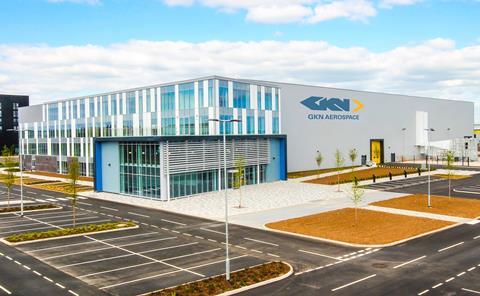UK-headquartered GKN Aerospace aims to take its newly announced 2MW fuel cell powertrain demonstrator to flight test by the end of the decade and is already working with an undisclosed airframe customer to realise the ambition.
Revealed on 22 July, the H2FlyGHT project will see GKN and its consortium partners develop a 2MW-class cryogenic hydrogen fuel cell propulsion system. The £44 million ($57 million) initiative is backed by the UK’s Aerospace Technology Institute (ATI).

While GKN intends to take the underlying technologies for the powertrain – the cryogenic motors and electrical distribution system, and the overall fuel system – to “a level of maturity ready for flight testing”, its goal is to go a step further, says chief technology officer Russ Dunn.
“In parallel we are working on which vehicle we would use and how we take this to flight test,” he says.
“We are working on a collaboration with [an airframe] customer on the flight test of our system.”
Last year, GKN announced it was collaborating with Embraer on the development and integration of a fuel cell powertrain but Dunn stresses that the airframer is not involved in the latest initiative.
Dunn does not disclose the aircraft type it is considering as a testbed but says he is “confident there is a vehicle to test it on”. Under that scenario, GKN would seek a sufficiently large platform “where our system can generate on-board power independent of the overall flight performance”.
The system to be developed through H2FlyGHT will be “fully representative” of a system that can then go to flight test, he adds.
To support entry into service of a hydrogen-powered aircraft in the 2035 timeframe, the cryogenic powertrain will need to be sufficiently mature by 2029 at the latest to permit a programme launch, says Dunn.
“Our aim ultimately is to influence the next commercial aircraft launch decision.”
GKN is already working on a 1MW powertrain and a liquid hydrogen fuel system through the ATI-funded H2GEAR and HyFIVE programmes, respectively.
H2GEAR runs until the middle of 2026 and Dunn says key elements of that system – notably the hydrogen-helium cryogenic cooling – will be adopted for H2FlyGHT, while others will be altered based on findings from the project. “We are only changing what needs to be changed.”
Early tests of a lower-power cryogenic electric motor to support that project have recently got under way at the University of Manchester in northern England.
Although using 75kW motor that uses a different cooling system to that planned for the eventual 1MW powertrain, the tests should still “prove the efficiency” of the concept.


































